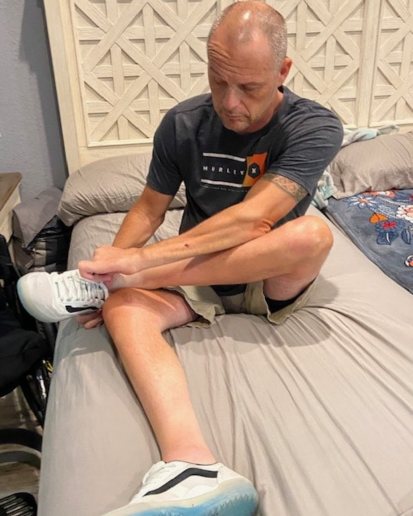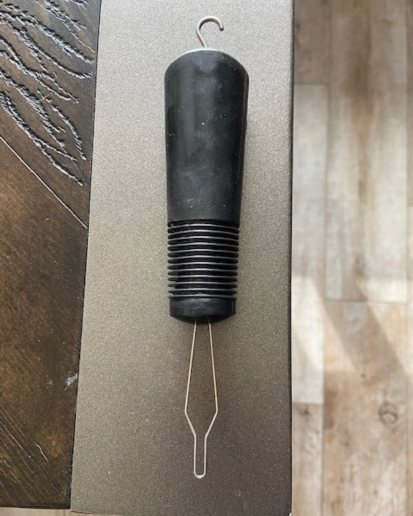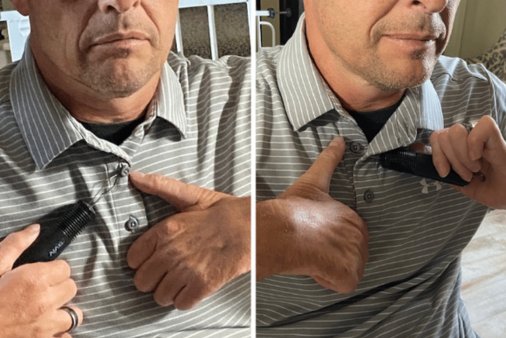
My name is Steve, and I’m a Patient Advocate at 180 Medical. I’ve been living with my spinal cord injury for over 30 years. As a quadriplegic, I know firsthand that people new to their injury can face many new challenges. One challenge I’ve learned to tackle is putting on my clothes without help. Over the years, I’ve learned some helpful techniques for putting on clothes and shoes.
While every individual and their level of injury is different, I’ve created a general rundown of tips that may help! Let’s review a few of my hacks for getting dressed after a spinal cord injury.
Hack 1: Practice and Exercise to Make Getting Dressed with a Spinal Cord Injury Easier
First, to get the best results, practice dressing on your own. Repetition is key. When you’re first starting, you may encounter some frustrating challenges as you go. However, with daily practice, you may begin to conquer those challenges more and more.
Next, I recommend staying as active as you can. Being active is good for everyone, but it’s especially important for those of us living with spinal cord injuries. No matter your injury level, you have options for exercising regularly.
Plus, doing a daily set of range-of-motion exercises helps. I find that it’s much easier to get dressed with loose, flexible muscles than tight muscles and heavy legs.
Ultimately, practice and repetition will be your two keys to learning how to get dressed independently after a spinal cord injury.
 Hack 2: Create a Routine for Dressing and Undressing
Hack 2: Create a Routine for Dressing and Undressing
One of the top tips for independently getting dressed after a spinal cord injury is to create a routine for yourself. As a C6 complete quadriplegic, I’ve found it’s easiest for me to follow a set routine for dressing and undressing daily.
My routine looks something like this: I shower each night before going to bed. Usually, I get undressed in my wheelchair before showering. Before I go to bed, I pick out the clothes I plan to wear the next day and place them nearby on my nightstand. Also, I typically put on my undershirt, underwear, and socks at night before going to sleep. This is a nice time-saving hack for mornings before work or school.
If I’m planning to wear a dress shirt, I get up, self-catheterize, and put on my dress shirt before returning to my bed. Then I’ll put on pants and shoes and tuck in my shirt.
Of course, your routine can and probably will be different from mine, depending on your schedule and injury level. For instance, quadriplegics may find it easier to fully dress in bed or on a firm gym mat. On the other hand, paraplegics may prefer to get dressed while sitting in their wheelchair. Go with what works for you, and don’t be afraid to experiment to find a routine that works for you.
Hack 3: Try Using Adaptive Devices for Getting Dressed After a Spinal Cord Injury
Luckily, adaptive tools made for putting on clothes can help those with limited hand dexterity, movement, or grip.
A few of the items you might consider using could include:
- Button pulls
- Zipper pulls
- Putting keyrings on zippers
- Foam wedges or pull-up loops to help you turn from side to side or sit up
- Reacher or grabber tool
- Shoehorn

Worried that button-ups and dress shirts aren’t a possibility for you anymore? They might be with a button pull!
Zipper pulls or putting keyring loops on zippers can also help you pull clothing items open or closed. I use a tool that combines a zipper and button pull function.
One thing I’ve learned over the years is to have finger/thumb loops sewn onto clothing items, such as the back of your socks. This will help you pull them up or down.
Also, try to get pants or jeans with belt loops on them. You can use those by putting your thumb or finger through the belt loop.
Hack 4: Wear Clothes and Shoes in Slightly Larger Sizes Than Normal
I’ve found that getting shoes and certain clothes in a larger size can help make getting dressed with a spinal cord injury easier.
Wear shoes that are about a half size larger than you’d normally need. They’ll be much easier to slip on and off. Also, if your shoes have laces, go ahead and loosely tie them. Then, use super glue in the knot to prevent them from coming untied.
Wear pants or jeans that are about one size bigger at the waist. That extra room really makes it easier to pull your pants over your hips and buttocks.
You may also want to try wearing looser shirts without tight collars. You don’t want a shirt that makes it harder to pull on.
If you wear bras, try a front-clasping bra. It will be much easier than reaching behind your back to fasten your bra.
Hack 5: Try Adaptive Clothing
Did you know that some companies make clothing just for people with disabilities? Clothing options may include VELCRO® closures on pants and shirts, stretchy tops and bottoms that pull on easily, and snap-back tops, jackets, and coats.
Just try searching online for adaptive clothing options, and I bet you’ll be surprised to find plenty of options out there! However, many people with spinal cord injuries figure out tricks and tips like mine. Many of us wear clothing that is no different than everyone else’s.
My Dressing Routine with Various Types of Clothing
Lastly, I thought it might be helpful to include a bit more about my routine for dressing.
Button-Up Shirts
It’s easiest for me to put on a button-up dress shirt while sitting in front of a mirror as it is easier to see the buttons and correct buttonholes. I tend to fasten all of the buttons except the ones at the top. This allows me to pull it over my heart, like a polo-style shirt, before fastening the remainder of the buttons with a button pull.

Pants and Belts
If I plan to wear a belt, I always put the belt through the pant loops before putting on my pants.
Then, I get on my bed, spread my legs, and put the pants to about my knee level before feeding one leg through the pants leg. This involves putting my foot through the pants leg and tugging the pants leg using both hands until my foot is all the way through. Then, I use the same process for the other leg.
While sitting up, I pull the pants up to my thighs before lying back to get them over my hips. I roll side-to-side as I pull them up.
If I’m putting on pants with belt loops, I put my thumb through the loop to get a good grip. If I put on track or sweatpants, I put my hand inside them near the elastic waistband and slip them over my hip. I roll side-to-side, doing this process multiple times until the pants are up high enough to waist level in front.
Tucking in Shirts
I find it easier to tuck my shirt in with my legs hanging off the bed. It may work for you in your chair. I lean from one side to the other as I use my hand to push the back of the shirt inside my pants. Next, I lie back and push the front of the shirt inside my pants.
Jackets and Coats
If I plan to wear a jacket or coat, I tend to use a button or zipper pull. I fasten it about halfway before slipping it over my head and shoulder. Then, I pull it down while I’m sitting upright in my wheelchair. With my limited hand dexterity, I find it easier to put on quarter-zip sweaters than full-zip jackets.
Catheterizing with Limited Hand Dexterity
I don’t bother fighting with my zipper when it’s time to self-catheterize. I personally find it’s easier to cath from the top of my pants. Not everyone can do this, however.
If you’re living with a spinal cord injury, 180 Medical offers a wide variety of catheters for limited hand dexterity, including the Cure Dextra Closed System Catheter. These can open up a new world of independence if you’re ready to learn to self-catheterize.
Contact our friendly specialists to learn more about your insurance-covered catheter options and get ready to start living a more independent life. It’s not over for you just because of your spinal cord injury.